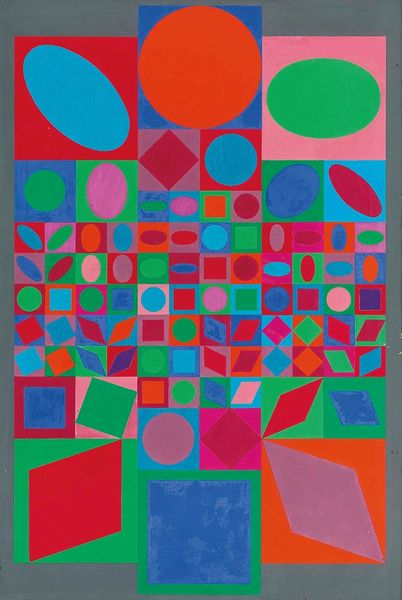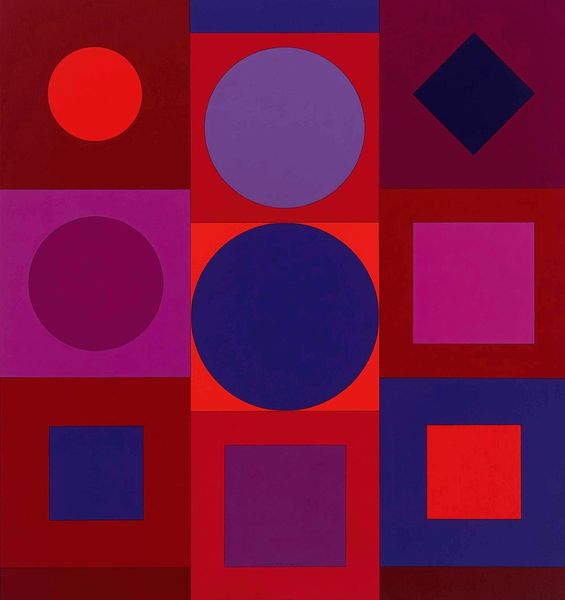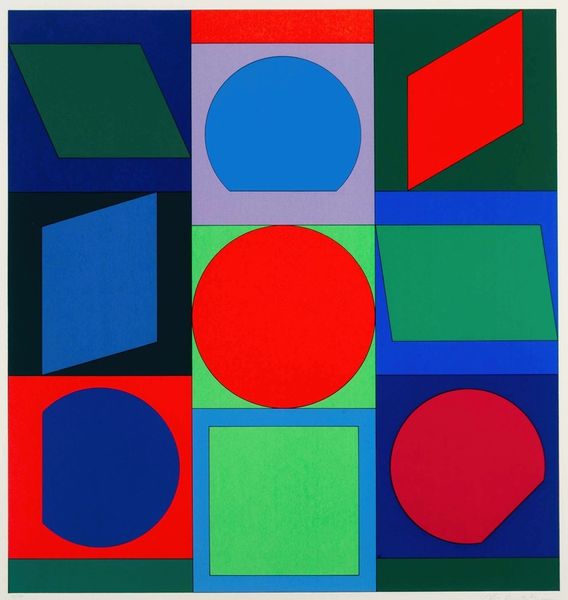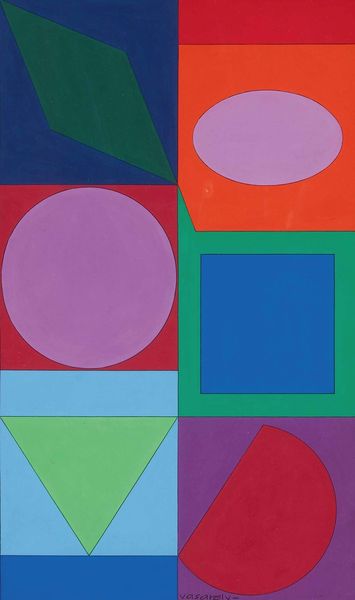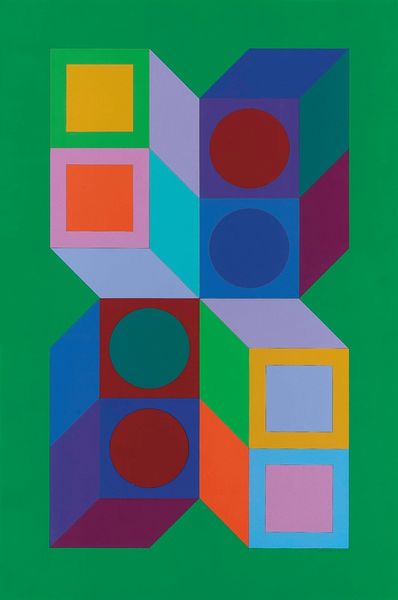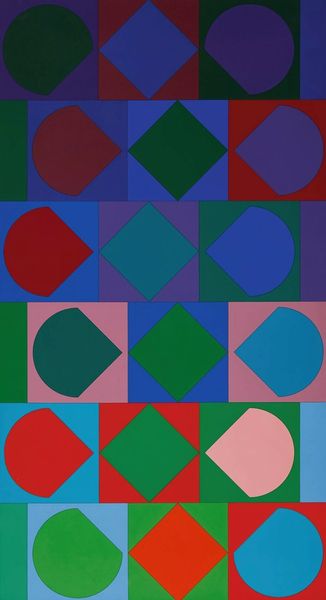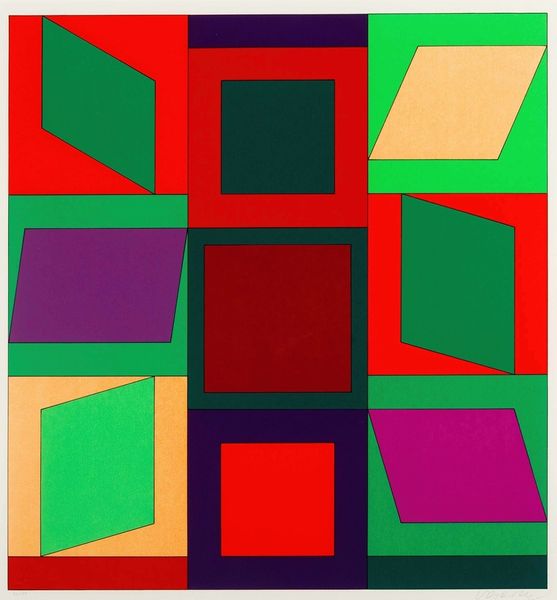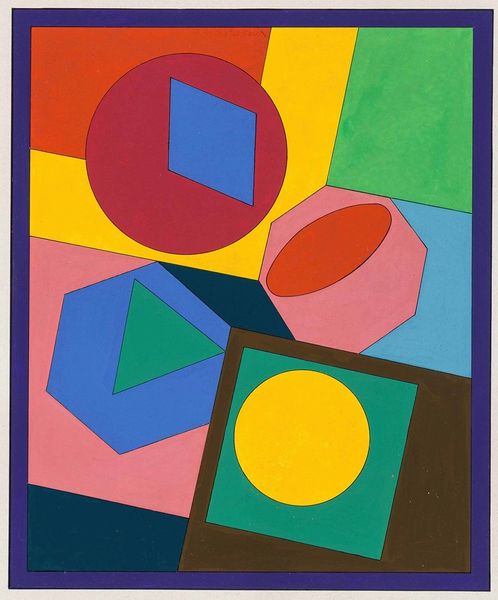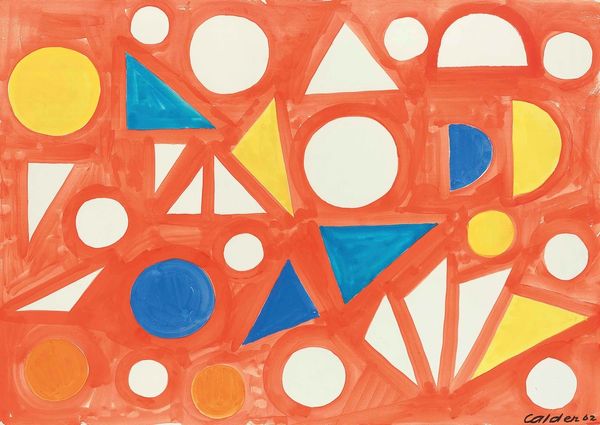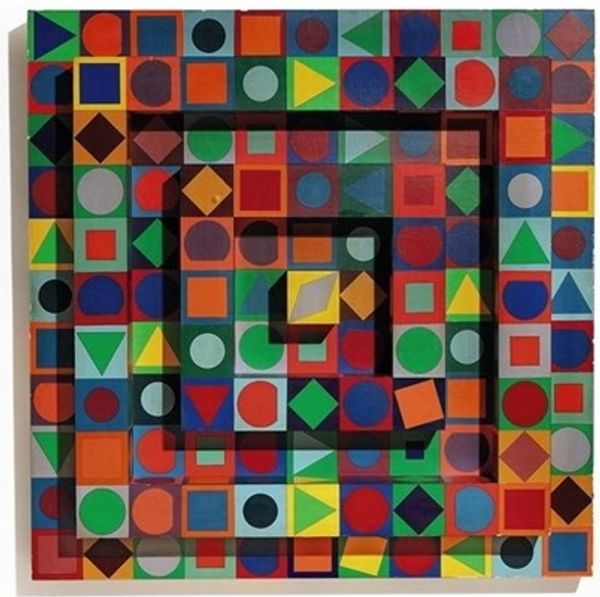
acrylic-paint
#
pattern heavy
#
pop art-esque
#
op-art
#
acrylic-paint
#
geometric pattern
#
abstract pattern
#
geometric
#
geometric-abstraction
#
repetition of pattern
#
vertical pattern
#
pattern repetition
#
layered pattern
#
funky pattern
#
repetitive pattern
Copyright: Modern Artists: Artvee
Curator: Welcome. Today we’ll be discussing Victor Vasarely’s 1988 acrylic on canvas, "Folklore." Editor: My first thought? A sense of calculated playfulness, almost like looking at an algorithmically generated quilt. The colors and geometric forms feel both ordered and surprisingly buoyant against the lavender background. Curator: Absolutely. Vasarely's masterful deployment of color and geometric abstraction, hallmarks of Op Art, are on full display. Notice how squares, circles, and diamonds interlock, creating a vibrating optical effect that challenges our perception. Editor: Yes, and it’s hard not to think about the sociopolitical context in the late 80s, especially with that title. It was a period of immense technological advancement but also increasing social fragmentation. Is Vasarely trying to suggest a universal visual language emerging from these disparate elements? Curator: That's an interesting reading. From a purely formal perspective, each shape, rendered in these very deliberate tones of red, green, blue, and white, works in concert to activate the viewer's retina, playing with depth perception through juxtaposition and relative placement. There's an undeniable system at play here, carefully mapped across the canvas. Editor: But “Folklore” implies something handcrafted, traditional, communal almost—something entirely antithetical to the cool, machine-like precision we see in the geometric forms. The tension between the title and the image pushes us to consider how our shared narratives are being reshaped, mediated by technology and mass culture. What, after all, becomes folklore in an increasingly globalized, digitized world? Curator: Perhaps it’s about how even in a standardized world, individuality can emerge from controlled systems. The colors prevent the geometric forms from appearing cold. We are talking about a modern take on folk art after all; it’s meant to question how visual information translates into lived experience. Editor: Food for thought! "Folklore," Vasarely's striking combination of cool geometry and warm colors, opens avenues to many conversations, spanning artistic expression, technological effects, and modern identity formation. Curator: Indeed, and what better evidence of art's ongoing power to reflect and refract the complexities of our world.
Comments
No comments
Be the first to comment and join the conversation on the ultimate creative platform.
